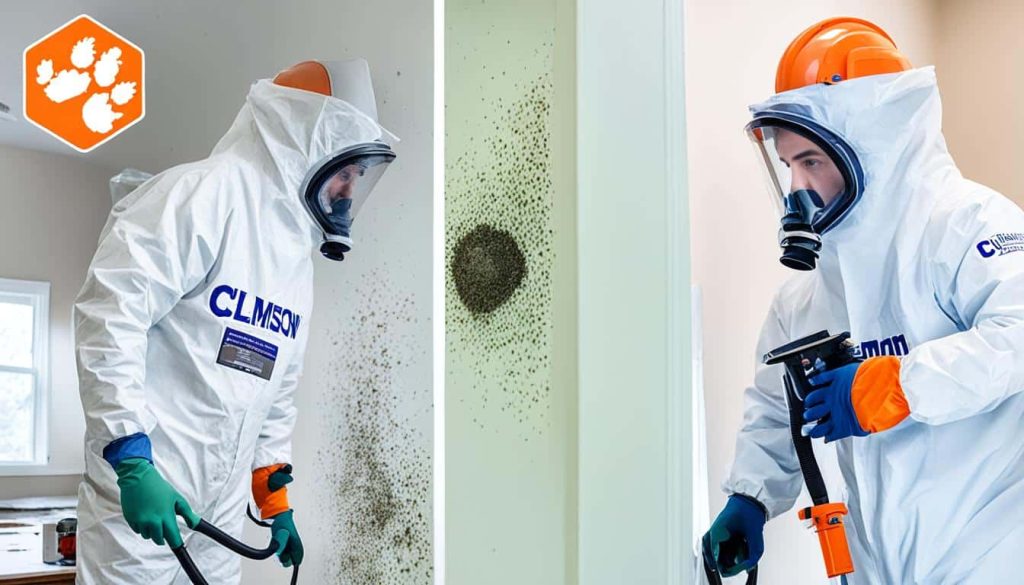In my previous article, I discussed the problems that dirt floor, vented crawl spaces can cause for unsuspecting homeowners. I also highlighted how an inefficient crawl space can drastically increase your heating and cooling bills. This time, I want to delve deeper into the issue, focusing on why Crawlspace Mold Testing & Removal and how it can adversely affect your home.
Array of Solutions, a trusted name in mold removal in Greenville South Carolina since 2007, stands ready to tackle your mold woes. With our expert mold inspection Greenville services and EPA-Registered credentials, we’re equipped to detect, remove, and prevent mold growth in your home or business.
Table of Contents
The Structure of Your Crawl Space
Most homes in the South are built on cinder block foundations, which are typically stacked on top of a poured concrete footer. While cinder blocks are an affordable and effective building material, they come with a significant downside: they are highly porous. This means that they act like sponges, absorbing any water that comes into contact with them. When combined with the fact that mortar joints, even when perfectly laid, are not waterproof, you have a recipe for disaster when it comes to moisture control in your crawl space.
Block foundation walls easily allow water and moisture to seep into crawl spaces. Some builders, and even some of my fellow professionals, attempt to mitigate this by installing a catch drain inside the crawl space to divert the water to a sump pump. However, this approach is counter-intuitive because it addresses only the visible water, not the underlying problem of moisture and humidity.

The Real Culprit: Water Vapor
It’s not the presence of standing water in your crawl space that poses the greatest threat to your home; it’s the water vapor. When water vapor enters your crawl space, it raises the relative humidity levels, creating an environment conducive to mold growth, wood rot, and other structural problems. This is especially concerning because many homeowners do not realize the correlation between moisture levels and humidity.
Water vapor translates directly into relative humidity, and your humidity levels are contingent on the presence of moisture. As outside air enters the crawl space, it typically cools down. Cooling the air increases its relative humidity, often by up to 2 percent for every degree the temperature drops. This means that by having open, vented crawl spaces, you could be unknowingly increasing the humidity levels in your crawl space, making it wet and dangerous without even trying to.
The Impact on Your Home
When the humidity levels in your crawl space rise, it creates the perfect breeding ground for mold. Mold thrives in damp, dark environments, and a vented crawl space with high humidity is exactly that. Over time, the presence of mold can lead to a host of problems, both for your home and your health. Mold can cause wood rot, weakening the structural integrity of your home. It can also trigger respiratory issues, allergies, and other health problems for you and your family.
Additionally, the moisture and high humidity levels in your crawl space can contribute to higher energy bills. As I mentioned in my previous article, an inefficient crawl space can cause your heating and cooling systems to work harder, increasing your energy consumption and your utility bills.
The Solution: Comprehensive Crawlspace Mold Testing & Removal
Given the risks associated with water vapor, humidity, and mold in your crawl space, it’s crucial to address these issues as soon as possible. At Array of Solutions, we specialize in crawl space mold testing and removal. Our process begins with a comprehensive inspection to identify the sources of moisture and mold in your crawl space. We then use advanced techniques to remove mold and moisture, ensuring that your crawl space is dry and safe.
Our approach includes sealing off any vents, installing vapor barriers, and using dehumidifiers to control the humidity levels in your crawl space. We also offer solutions like encapsulation, which involves sealing the entire crawl space to prevent moisture from entering. This not only protects your home from mold and wood rot but also improves your indoor air quality and energy efficiency.

Take Action Today
If you suspect that your crawl space may be harboring mold or if you’ve noticed an increase in your energy bills, it’s time to take action. Don’t wait until the problem becomes more severe—call Douglas R. Whitehead II at Array of Solutions or visit Arrayofsolutions.com to schedule a crawl space inspection today. With our expertise, we can help you protect your home from the hidden dangers of mold and moisture, ensuring that your living space is safe, healthy, and energy-efficient.
